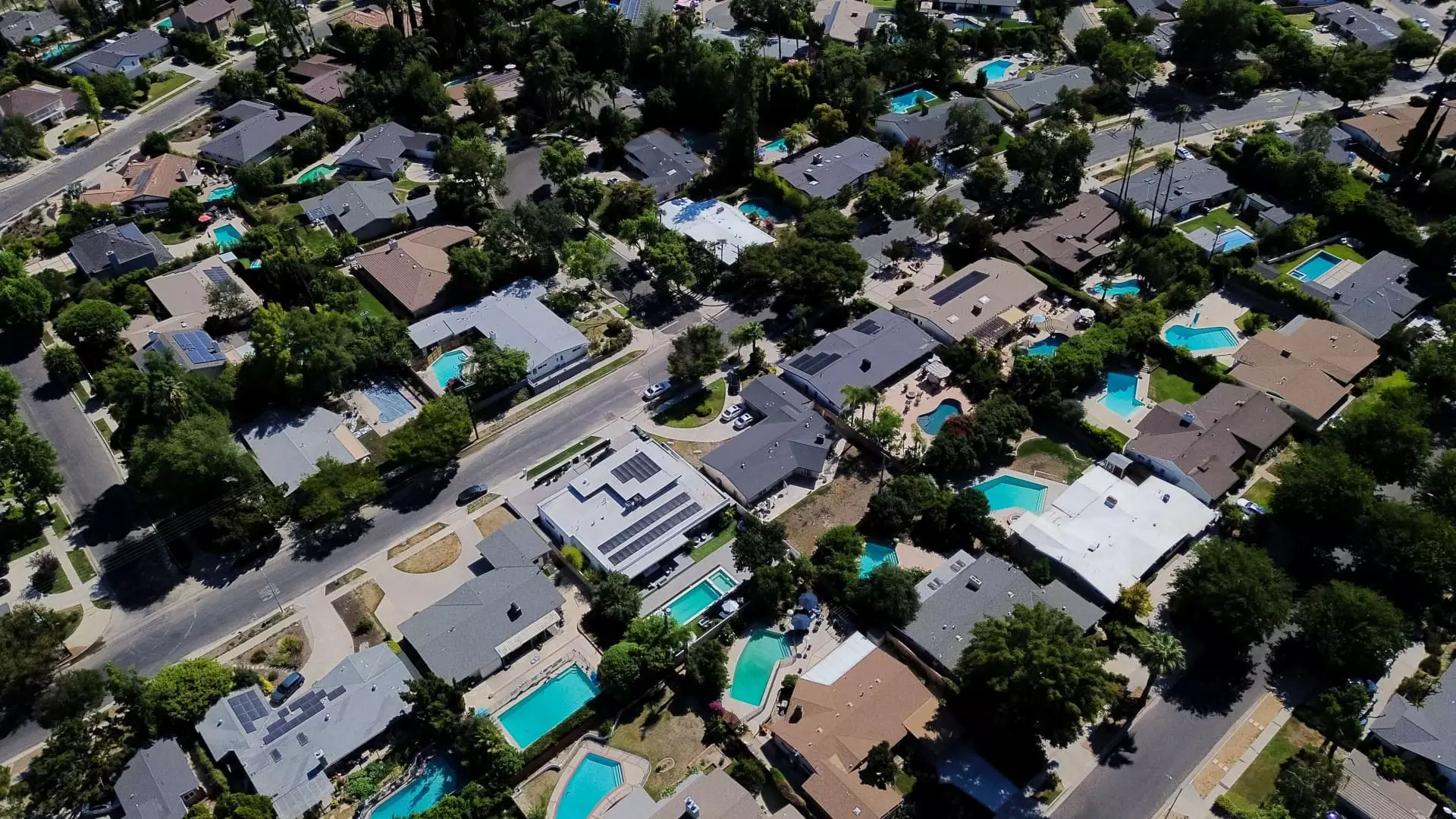The current state of the housing market presents a paradox that demands scrutiny. On one hand, the median home price has climbed to a staggering $435,300—an all-time high for June—reflecting a supposed surge in market strength. Yet, beneath this veneer of progress lies a troubling reality: sales figures indicate stagnation, with a modest decline of 2.7% from May and a flat year-over-year comparison. This disconnect raises questions about what these escalating prices truly signify. Are they driven by genuine demand or merely a symptom of persistent supply constraints and speculative behavior? The data suggests that while prices continue to soar, the actual volume of transactions remains virtually frozen, exposing the fragility of the purported “booming” housing scene.
High Mortgage Rates: The Silent Killer of Market Mobility
One of the most critical factors suppressing home sales is the stubbornly high mortgage rate environment. Despite no significant fluctuations lately, with rates lingering near 6.77%, they remain elevated compared to pre-pandemic levels. These high rates act as a damper on potential buyers, especially first-time homeowners. Lawrence Yun, the chief economist for the National Association of Realtors, articulates a reality that many overlook: a decline to 6% in mortgage rates could unlock hundreds of thousands of additional homebuyers, invigorating an otherwise sluggish market. Instead of tackling this core issue, policymakers and industry stakeholders seem content to overlook the pain inflicted on first-time buyers, who are essential for healthy market rotation. The concern is that the narrative ignores how high borrowing costs systematically exclude essential segments of the population, distorting market signals and artificially inflating prices.
Supply Surplus and the False Promise of Affordability
Although supply has increased—up 15.9% from last year and standing at a 4.7-month inventory—the market remains unbalanced. The six-month supply benchmark is a critical indicator of equilibrium—yet we’re nowhere near it. This persistent scarcity fuels bidding wars for homes that do come onto the market, pushing prices sky-high, especially in the upper tier where homes priced above $1 million have jumped 14% annually. Meanwhile, homes under $100,000 have seen sales decline by 5%, highlighting a clear segmentation crisis: affordability is shrinking at the lower end while luxury segments flourish. This dynamic exacerbates inequality, positioning homeownership further out of reach for middle and working-class Americans. The narrative of rising home prices benefits investors and incumbents at the expense of first-time buyers, whose limited presence (only 30% of sales, down from a typical 40%) underscores how unbalanced the market truly is.
Buyers Are Becoming Disillusioned and Cautious
The average days on market increasing from 22 to 27 is more than a minor statistic—it signals a shift in buyer behavior. Homes take longer to sell, and the slight decrease in multiple offers—from 2.9 to 2.4—points to cooling enthusiasm. Despite the high cash deal proportion—29%, much higher than pre-Covid levels—these transactions likely involve investors and speculators rather than genuine owner-occupiers. The overheated luxury segment’s resilience does little to offset the broader malaise, especially when first-time buyers face insurmountable barriers. This paralysis reflects a market that is increasingly disconnected from the socio-economic realities of most Americans. The narrative of a “strong” housing market is, therefore, more illusion than substance, masking a deeper crisis of accessibility and affordability.
The Hidden Costs of a Misguided Market Strategy
Ultimately, this contradiction between soaring home prices and stagnant sales signals a broader systemic failure. It’s a market distorted by speculative investment, policy complacency, and a refusal to address underlying affordability issues. For economic stability and social cohesion, it is imperative that stakeholders prioritize reducing mortgage rates, increasing supply, and fostering affordable options. Without these crucial reforms, the housing market’s apparent vitality risks becoming a fragile facade—one that could implode under the weight of its own inequalities and distortions. The current trajectory favors the wealthy and institutional investors, perpetuating social divides rather than offering the American dream of homeownership to the many.

Leave a Reply